Car rides are not only for adults, of course, as little ones enjoy a good drive around town, too! Aside from diapers, snacks, and moist towels, parents and caretakers should also prepare car seats to look after the safety of their young passengers.
You might think that they’re safest when they’re wrapped up in your arms during a ride. But the truth is babies and toddlers are safest when they are tucked correctly in their car seats. Philkotse.com gives you a guide on the benefits of car seats for children and how to install these in your car.
1. Types of car seats
There are several types of car seats, offering different levels of safety for children of all ages. Every kind requires a different method of installation, too.
Baby/infant-only car seats
These are the recommended seats for the youngest passenger in the family. The infant-only car seats are always placed facing the rear to maximize safety for your little ones. These usually have a weight limit that could range from 22 pounds to 35 pounds, (approximately 10 to 18 kilograms).
It also has a height limit that depends on the brand and quality of the baby car seat you choose. If your young passenger’s weight and height measurements no longer fit the capacity indicated on the infant seat’s manual, consider getting the next size up.

The infant-only car seats are always placed facing the rear direction to maximize safety for your little ones
Reminder
Baby car seats are usually manufactured to be rear-facing seats. Placing them in the wrong direction can endanger your little one. In the event of a crash, the fact that the seat is facing the original car seat way doubles the safety levels for your baby.
If you place it in the opposite direction, the angle of the baby seat may also change. Also note that if your baby car seat has ever been involved in a bad accident (a collision, rolling over, etc.), it’s best to just get a new unit for future use.
>>> Grasp your attention: Choosing the best car seat for your children - 3 bits of advice for Pinoy drivers.
Infant-toddler seats or convertible car seats
These types of seats are made to be easily adjustable so you can face your little one towards the front or back. If your youngster has already outgrown his rear-facing seat and is still not old enough for the front-facing variety, you can get this model instead.
You can just re-adjust the seat by the time you think he’s big enough for the forward-facing seat.
If you’re not sure when the best time is to change your baby’s seat variety, consider the limits of your current baby car seat when it comes to his or her weight and height. Convertible car seats usually have a capacity of 40 pounds to 70 pounds.
Remember: Try to keep your little one in the rear-facing seat as long as they need to. As they grow up and require a front-facing seat, it can actually become less safe for them
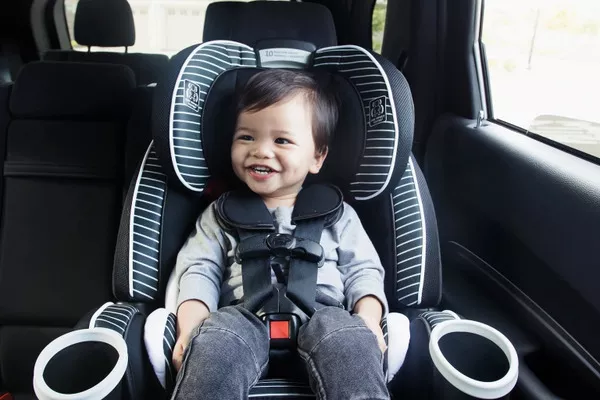
Convertible car seats are the next level up from baby or rear-facing seats
Belt-positioned booster seat
This is the last type of car seat for your little one before he or she can finally sit on the regular seat. Once your toddler has outgrown the convertible-type seat, you will now need to utilize the regular car lap and shoulder laps to keep your child secure while he’s on the booster.
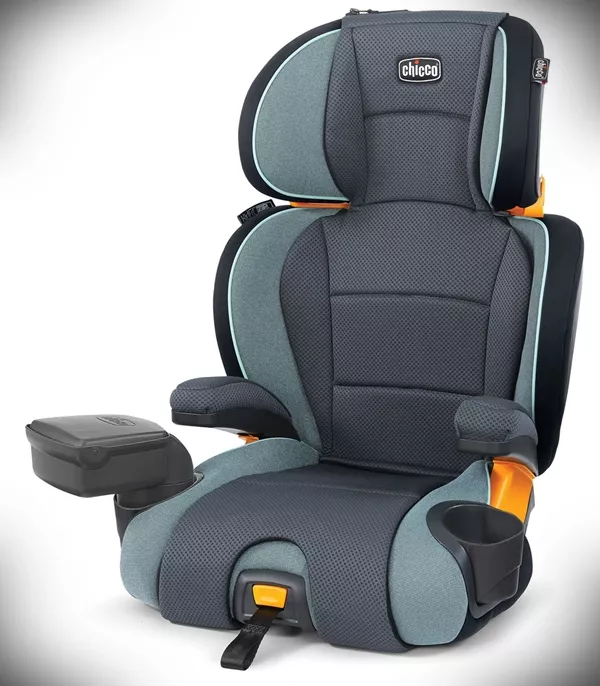
Utilize the regular car lap as well as the shoulder laps to keep your child secure while he’s in the booster
>>> Read more: 5 things you need to know about baby car seats.
2. How to install an infant car seat
Step #1. Install the base
Set the base onto your chosen position and make sure that it’s at a 30-to-45-degree angle.
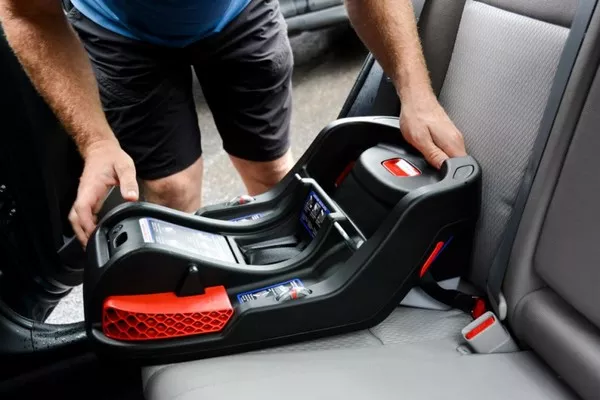
Set the base onto your chosen position
Step #2. Secure the base
Use your vehicle’s seatbelt to secure the baby seat by looping its seatbelt through the respective holes.
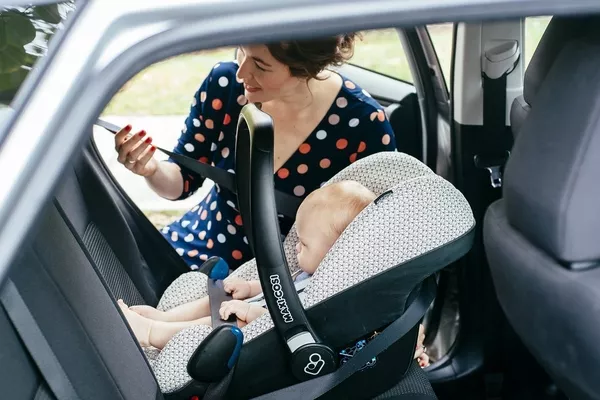
Use your vehicle’s seatbelt to secure the baby seat
Step #3. Lock the seatbelt
Pull the seatbelt all the way out and allow it to retract by itself. It will create a sound that is similar to how seatbelts normally retract.
Step #4. Install the seat
Put the rear-facing seat on the base using the base “click connect” system.
>>> Worth reading: Car seat law Philippines: Republic Act No. 11229 begins at February 22, 2019
3. How to install a front-facing car seat
Step #1. Thread the seatbelt through the car seat
The back or the bottom part of your car seat (depending on the variety) will have openings where the seatbelts are meant to pass through. Pull the seatbelts through these holes and lock the seat belt so it’s secure.
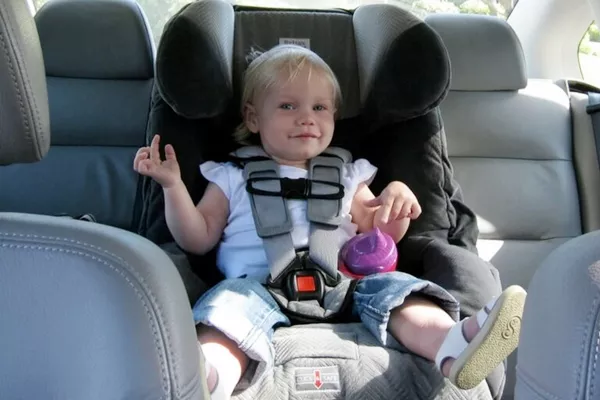
If you bought a front-facing car seat that uses a latch system, follow the manual instructions
Step #2. Use the tether
If your car seat has a tether, feed it over the top of your vehicle’s seat. Then, latch it to the metal anchor that you can find right around the back. If you bought a front-facing car seat that uses a latch system, simply follow the instructions on the manual provided with your purchase.
>>> Also check: How to safely install baby car seat: 4 easy steps for Pinoy parents.
4. How to install a backless booster seat
Step #1. Put the seat in place
Place the booster seat where your child will be seated and make sure the unit sits flat on the surface without bulges or folds.
Step #2. Let your child sit on it
Let your little one sit on the booster seat to check if it fits him or her perfectly.
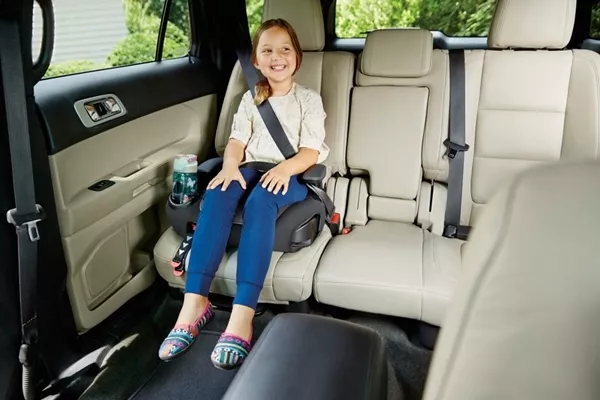
Check if the booster seat is secure and that the seatbelt is not restricting your child’s movements or breathing
Step #3. Put the seatbelt on
Pull the seatbelt across your little one’s body and buckle it securely. Make sure that it’s snug enough and that your child is still comfortable at the same time.
Step #4. Check the fit
Check if the booster seat is secure and that the seatbelt is not restricting your child’s movements or breathing. Make sure you adjust the seat every now and then. Children grow up fast. The adjustments you made now may not be ideal for them in a couple of months.
>>> Click here to get more useful tips and advice for car owners.
Recent posts
- How to choose car seat cover in the Philippines: Essential Tips for Pinoy drivers Aug 18, 2023
- Car seat law Philippines: Republic Act No. 11229 begins at February 22, 2019 Apr 22, 2019
- Must-know steps on how to clean different types of car seats Sep 12, 2018
- Choosing Car Seat Material: Which kind of material is the best? Dec 28, 2020
- Making Peace with Your Car Seats Feb 21, 2019












